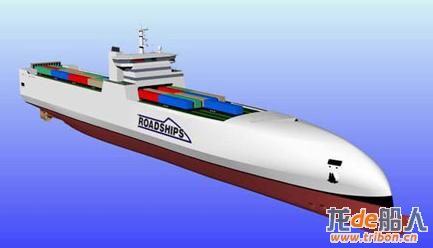|
|
 -->
-->
Australia's Roadships, recently listed on the Nasdaq Over-the-Counter Bulletin Board, has set its eyes on US shortsea shipping with the unique high-speed monohull ro-ro design.
The transport outfit on June 26th asked STX Canada Marine to include LNG power in designs for its fast ro-ro concept.
Roadships says it and STX Europe's Vancouver-based design and engineering arm have amended their long-running commercialisation deal to reflect change.
"By running the ship on LNG, we reduce carcinogenic fuel use on shore, and we know that's going to make a big impact," Roadships chief executive Michael Nugent said.
Friday's design re-jig aims to take advantage of Ecorizon, STX Europe's sustainable shipping research-and-development initiative.
"The latest technologies will be applied in the design and equipment selection to ensure the ship achieves the least impact on the environment and will put the vessel at the forefront of a new generation of coastal marine transportation," STX Canada Marine president David McMillan said.
Nugent says his company is considering building six of the vessels. As Roadships aims to operate under the US Jones Act, he hopes at least four will be built at US yards. But two ships may be constructed at foreign yards to get the project off the ground.
After scoring financing likely to be a mix of debt and equity, Nugent expects to make a construction commitment within the next two quarters.
The fast ro-ro concept took its start in the early 1990s at Kvaerner Masa Yards in Finland, later to become part of STX Europe, for shortsea shipping in Europe. McMillan says that Roadships and STX Canada Marine have been working together on the monohull ro-ro design for about a decade.
With a piercing bow form to cut through high seas, Roadships' version of the design aims for speeds of about 56 kph and the ability for quick turnaround. Until Friday's agreement, the 2,430-lane-metre ships were slated to have high-output medium-speed diesel engines.
The design also involves allows for simultaneous discharge and loading operations from two decks. |
|